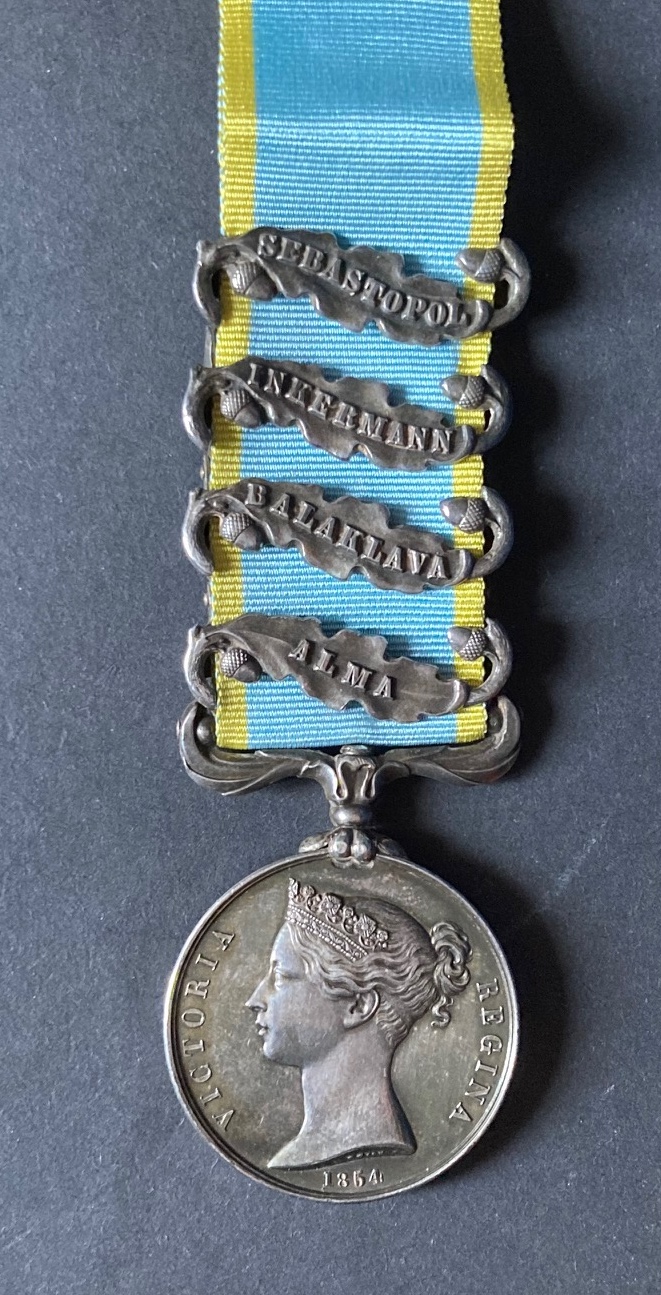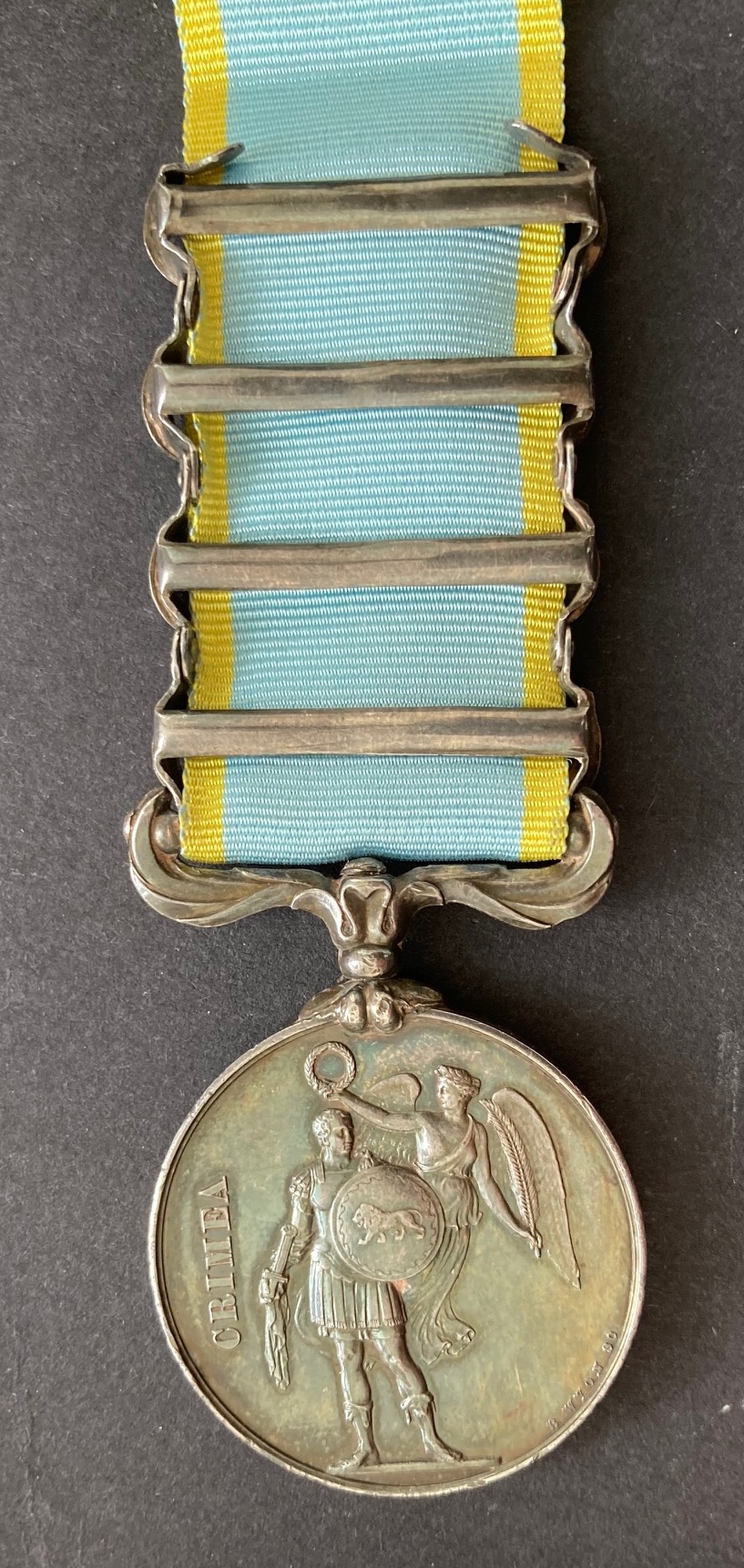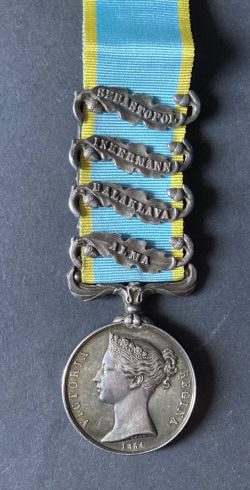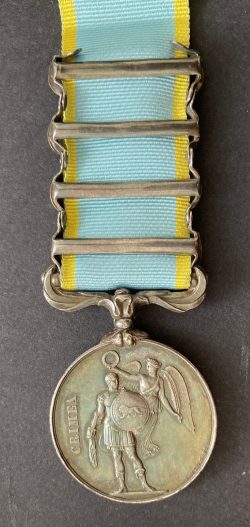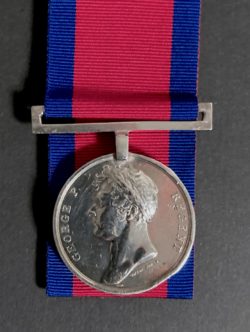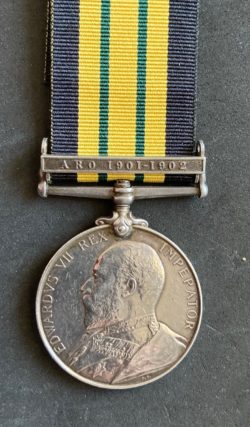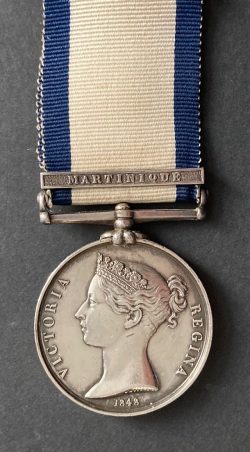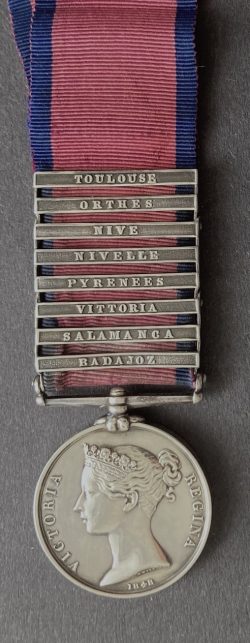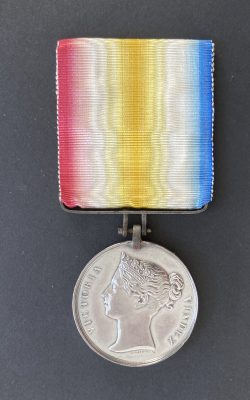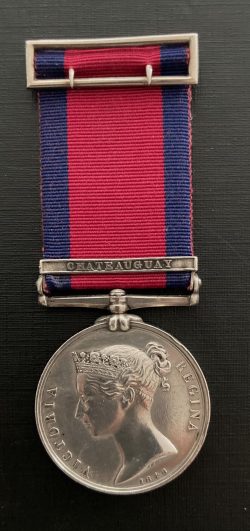Crimea, 3 (4) clasps, Balaklava, 17th Lancers, officially impressed ‘ Charger’, wounded, taken Prisoner of war, died in Russian hands
£10,250.00
Out of stock
Crimea, 3 clasps, Alma, Balaklava, (Inkermann) Sebastopol.
R. Edge, 17th Lancers,
Officially impressed ‘ Charger’, wounded, taken Prisoner of war, died in Russian hands
Issued with Inkermann clasp in addition due to administrative error. According to Noonans at least 5 other P.o.W. known with Inkermann credited in error (re lot 407 22 July 2016 Parker).
Prov. Glendining 22 January 1903, and again 28 March, 1927
‘Private Robert Edge , born at Newcastle, a labourer prior to enlistment on 1st July 1848, wounded and taken prisoner in the charge: 25 October, 1854. Died in captivity.’ (re Lumis & Wynn)
It was during the initial stages of the siege of Sevastopol that the 17th Lancers made their most famous charge as part of the Light Brigade at Balaklava.
The allies had laid siege to Sevastopol and in an attempt to break the siege on the 25th of October 1854, the Russians launched an attack on the Causeway Heights to cut the British off from their supply chain. Initially the Russians met with success taking both the Heights and the redoubts defending them.
The stubborn defence of the 93rd Regiment of Foot and the successful Charge of the Heavy Brigade halted their advance.
It was not until the later stages of the battle that the famous Charge of the Light Brigade took place. In fact it was caused by confusion of orders. From his position on the Sapoune Heights, Lord Raglan could see that the Russians were about to carry away the captured guns from the Causeway Heights. Raglan therefore ordered Lord Lucan, the commander of the Cavalry Division, to launch the Light Brigade to retake the guns. From his position in the valley Lucan could not see the guns. When he asked for further clarification from Captain Nolan, the ADC who had brought the message, Nolan pointed not to the guns on the Causeway Heights, but to a Russian Battery at the end of the valley. Having received the clarification he required, he directed Lord Cardigan, his brother-in-law and Commander of the Light Brigade, to advance down the valley.
On orders Cardigan advanced the five regiments of the Light Brigade towards the line of Russian guns at a trot.
The first salvo was fired when the brigade had advanced only 200 yards. Each subsequent salvo took a heavy toll on the 17th, who were positioned forward left in the Brigade, but the advance continued unabated with the gaps in the line being filled quickly.
As they neared the guns, the Light Brigade broke into a charge, and were met within eighty yards by a final salvo. The 17th, led by Captain Morris, swept down on the enemy, carrying the guns and driving the Russian cavalry, who were massed behind the guns, back in disarray. “Half a dozen of us leaped in among the guns, and I with one blow brained a Russian gunner.” (Private John Vahey, Regimental butcher). The force was however too small to maintain the position unaided and were forced to withdraw back up the valley, again under constant musket and artillery fire from the flanking Heights, and harassed by Cossacks who rode down among them.
Of the 147 17th Lancers that charged, some two thirds were killed, wounded or prisoner though it is recorded only 38 answered the roll call after the battle.
For their gallant actions that day, three Victoria Crosses were awarded to members of the Regiment, all for rescuing wounded comrades.
